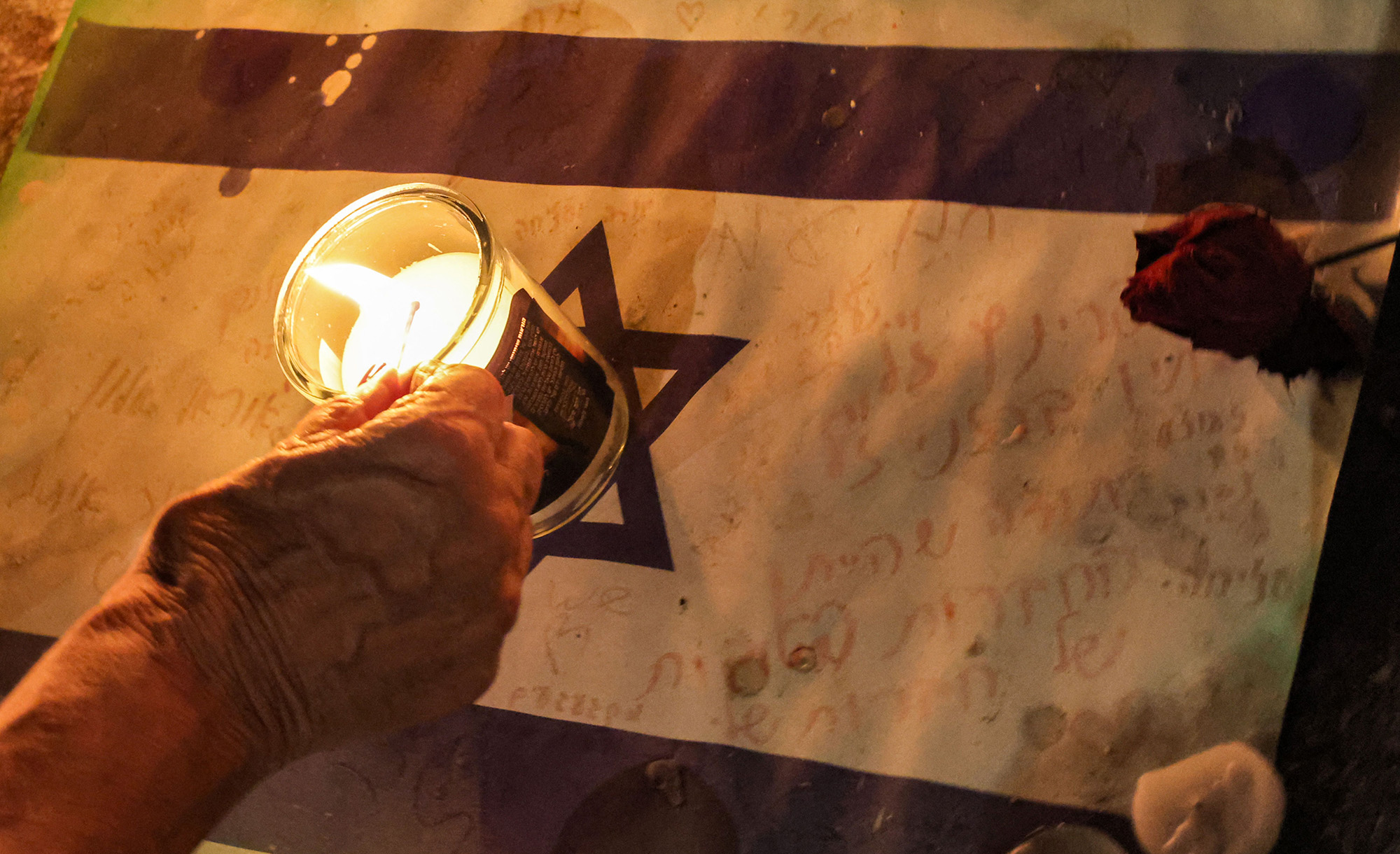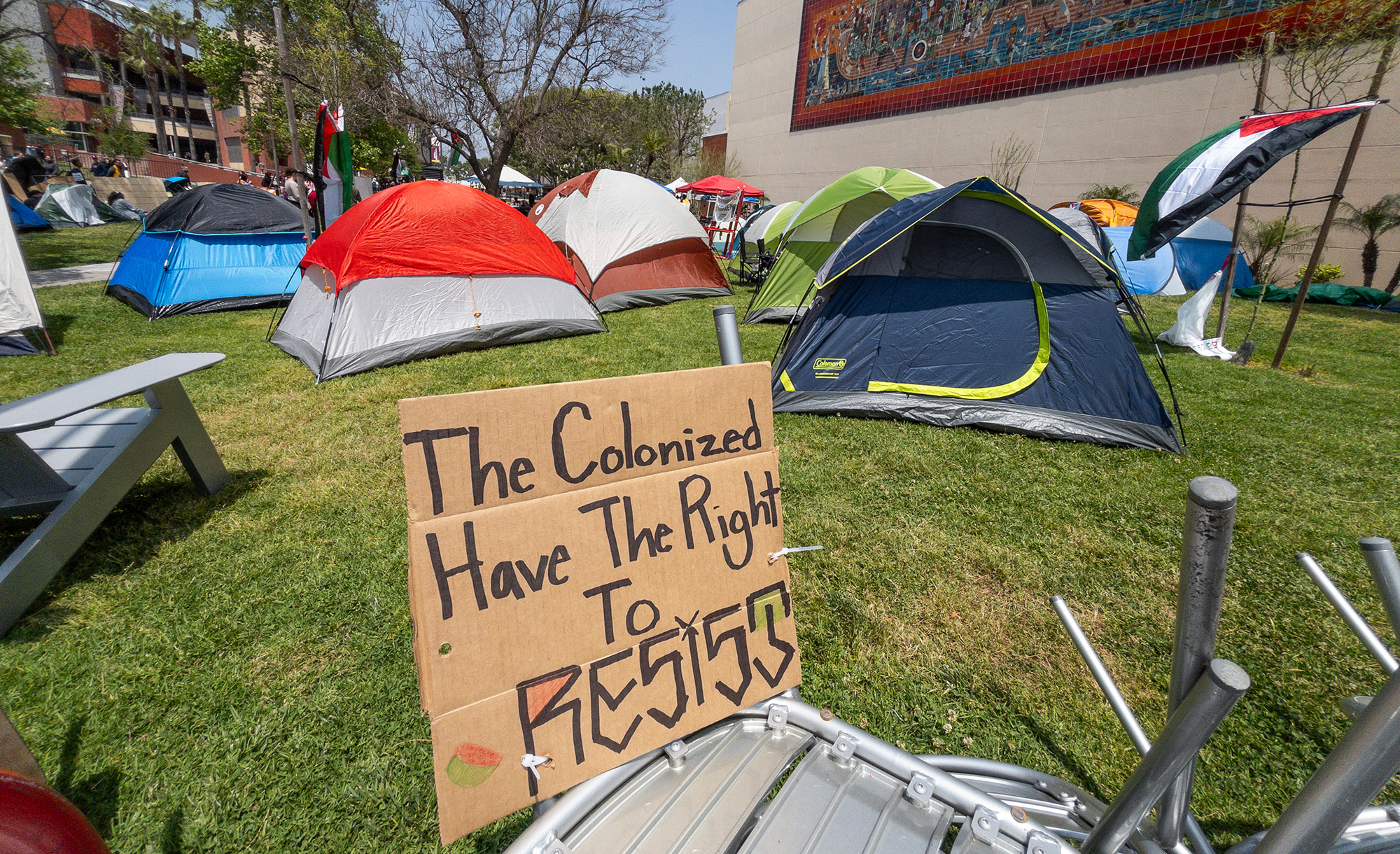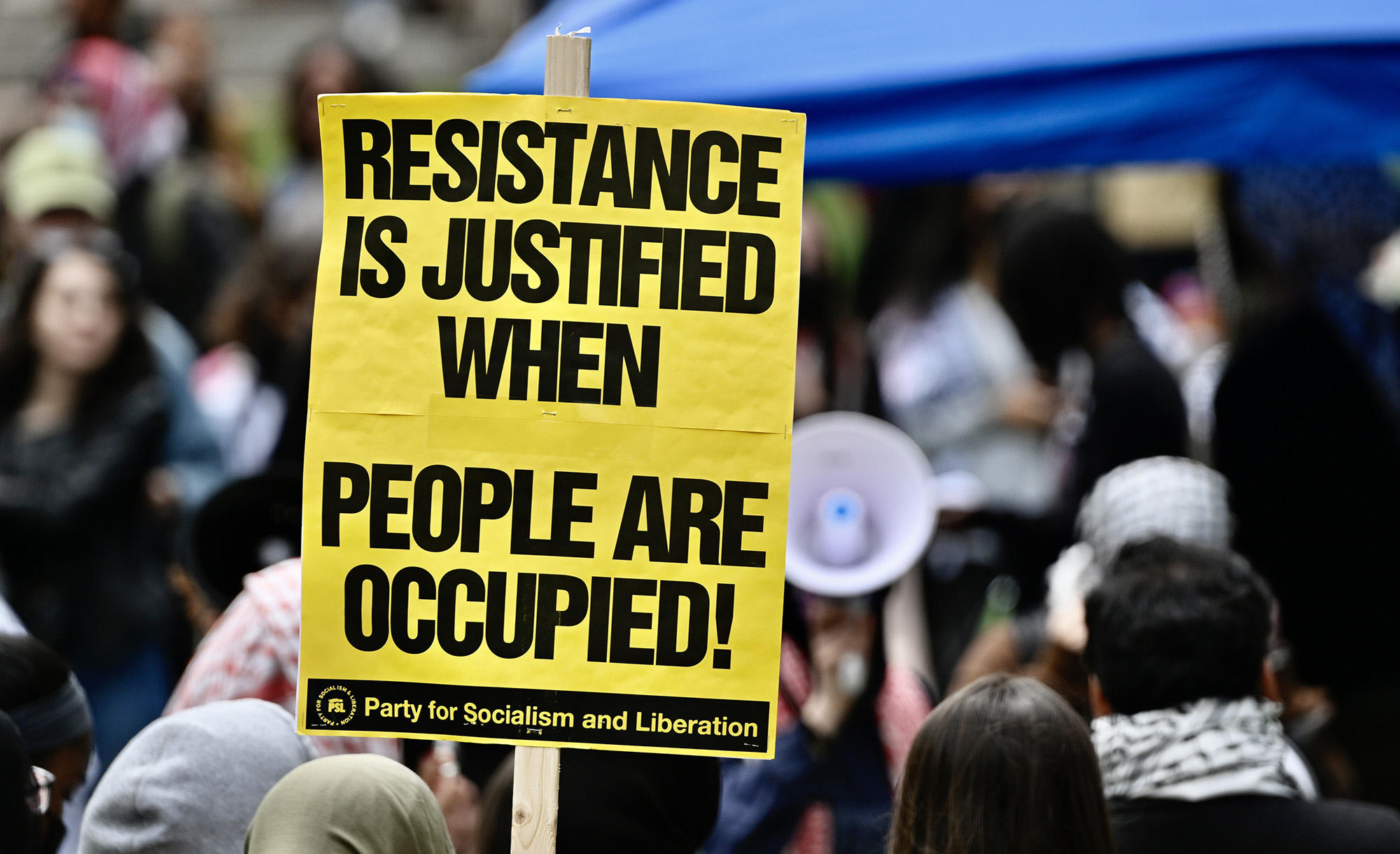I intended to begin with the story by the Yiddish and Hebrew writer I.L. Peretz that we studied in the upper grades of the Jewish elementary school that I attended in Montreal. When the attack of October 7th gave this conference even greater urgency, I realized that despite the shift of focus I could begin with the very same story. Writing in Warsaw at the beginning of the 20th century, Peretz was greatly troubled by the rise of anti-Semitism in Poland and in the rest of Europe. To rally the anxious Jews of his time, he wrote modern folk tales; this story was one of them.
“The Three Gifts,” Di dray matones, begins “Once long ago,” with the death of a Jew somewhere in this world—anywhere, anytime. When the soul of this average Jew ascends to the heavenly court, it has neither enough good deeds to gain admission to heaven or enough evil deeds to be sent to hell, so this poor soul is condemned to eternal wandering in limbo. But he cries and pleads so bitterly that the gatekeeper suggests he might try to “win” his way into heaven by bringing its saints three gifts. The saints, he is told, “like nothing more than a common soul that’s managed to work its way up.” So the soul begins searching for what might be an appropriate gift.
But the world’s other inhabitants turn out to be as mediocre as he was. For many years he roams unsuccessfully until late one night he is attracted by the light in a window, and he sees masked robbers holding up a wealthy Jew with a knife at his throat, threatening to kill him if he makes a move. The Jew watches them calmly as they load his valuables until in a far corner they find a little bag, and then he lunges forward and they shove the knife into him, certain that they have found the most precious of his jewels. But it is only a bag of earth—the pouch of earth from Eretz Israel that the Jew had prepared to be put under his head at burial. The soul scoops up some of that bloodied earth for the first gift accepted by the heavenly saints.
After many more years the soul finds the second gift in a city in Germany. Peretz adds “of course this happened long ago,” implying that it has remained all too relevant at the start of the 20th century. A Jewish girl is about to be punished for having secretly left the walled ghetto on a Christian holy day. Accused of having polluted the Gentile streets, she is sentenced to be tied by her hair to the tail of a wild horse and dragged through the streets until dead. But she is granted one last wish. What she asks for are pins—to pin her skirt into her thighs, so that her modesty should not be exposed. One of those bloodied pins from her corpse the soul takes as his second gift, and it too is accepted.
The final gift the soul finds, eons later, in a prison yard where a Jew has been sentenced to run a gauntlet. He is beaten savagely as he runs between the two rows of soldiers. Suddenly, one of their whips knocks the skullcap from his head and though he is almost through, he turns back to replace it on his head and collapses, dead. The soul picks up the bloodied kippah for his third gift, and in accepting it, the saints admit the soul into paradise. “What excellent gifts!,” one saint is heard to say, “They are lovely, beautiful—but of no use, impractical.” End of story.
This being our school curriculum, we youngsters in Montreal did not need Harry Potter to catch our attention. In discussion that followed, we concluded that the gifts represented three foundations of our Jewishness (1) the ultimate importance of the land of Israel, (2) the claims of Jewish morality, here represented by modesty (tsni’ut), and (3) knowing that we stand before God: nationhood, moral uprightness, and religious faith. Encompassing them all is the readiness to die for kiddush ha-Shem, in sanctification of God’s name. But we also saw that Peretz himself, even as he respected these values, worried about the nature of these “gifts.” Beautiful, but useless, a voice quips at the end, raising doubt about the very martyrdom the story has dramatized.
This story by Peretz became a staple of the modern Jewish school curriculum. In the Ghetto of Vilna, in May 1943, the Yiddish poet Avrom (Abraham) Sutzkever wrote a poem called “Di lererin Mire”—Schoolteacher Mira. The poem begins with the Jews being herded into the ghetto where this beloved teacher, whom Jews in Vilna recognized as the real-life Mira Bernshteyn, defied Nazi orders by setting up a secret underground school. During the roundups in the streets outside, the children laugh as she reads to them from the works of Sholem Aleichem, but the class of 130 keeps dwindling to 60, to 40, . . . until in the final stanzas the hideout is discovered and the remaining children are seized with their teacher—just at the point where she is reading them about the third gift of Peretz’s story. This is how Sutzkever memorializes the struggle for survival in the throes of destruction.
Now this is very moving, isn’t it? What amazing cultural transmission was sustained through a modern educational system. We must be dedicated to passing on this precious part of our inheritance, and this is what we shall continue to do. But if Peretz was already doubtful about placing so much emphasis on martyrdom, we are all the more so today—because this is no longer all that we are as a people.
The creation of Israel in 1948 after Europe’s descent into depravity was, like Noah’s dove, the sign that civilization might continue after all. People have always looked for miracles, but the altogether human marvel of Jewish resurrection should inspire us to transmit to the world the meaning, the significance of our example. The self-transformation of a people from slavery to national independence—does anyone think that this was just an epic story of ancient days? Not at all. Here is the exodus reenacted. Hatikvah indeed—hope that the liberation of the Jews can be a light to the nations. And that was just the beginning:
- One of the greatest crises of our times is the flood of refugees. See how Israel absorbed its refugees, imperfectly to be sure but with what generosity and consideration. Think of how different the world would be today if Israel’s neighbors had resettled and integrated their fellow Arabs with anything like our sense of familial responsibility.
- Nation building? Study how Israel revived and reclaimed the Hebrew language to unite Jews arriving from at least 40 countries.
- How do we decide between socialism and capitalism? See how a society that needed collective settlements for the difficult early stages of pioneering evolved politically and economically, at its own pace, as men and women sought more individual freedom through voluntary association. And see how economic freedom unleashes initiative and prosperity.
- Self-defense? See how a people that had paid the ultimate price for a deficiency in this regard became a strong military power.
I could go on and on—and this is what we ought to have been doing—building a curriculum for sharing our know-how with others, and to let them learn from our experience. Israel’s resurrection is a teachable moment for every child and adult in America.
Isaiah declared: “Out of Zion shall go forth the law and the word of the Lord from Jerusalem.” We who had access to the media and the academy, to Hollywood and Tin Pan Alley, Wall Street and Madison Avenue—how well did we get out that word? Most American Jews didn’t try, but instead put out a different message. After what we called the Shoah, the Holocaust, too many of us trusted that the worst was now behind us and that evidence of Germany’s descent into barbarism would inhibit any such future evil.
This was a massive failure of intelligence, for which we continue to pay the price. We, the repeated target of evil regimes, should not have expected the murder of six million Jews to create sympathy for us or revulsion for genocide. We could have guessed from our own history that news of our vulnerability could invite imitation. While Israel built one Yad Vashem and conscripted successive generations into military service, we who continued living among the nations did the opposite. We built 100 Yad Vashems without training our youth to defend and protect our national rights—without training them for a war they would be forced to fight. We did not lose the war of ideas to anti-Zionism: most of American Jewry never entered the war of ideas in the first place.
Everyone agrees that we must learn from history: but what was to be learned? Too many of us let the transformative achievement of Israel speak for itself and expected the story of our genocide to remain the moral Iron Dome that would deflect all further attempts to destroy us. Yet even as the crematoria shut down and one war ended, the Great War against Israel began. Arab and Muslim leaders declared that they would never allow the Jews to recover their homeland. They organized an ideological war against the Jews’ right to Israel, deliberately cultivated generations of Palestinian refugees, and encouraged a campaign of violence that they cannot control even though some of them would now want to, and some of them are trying to. Making that connection between Nazi anti-Semitism and Arab Muslim anti-Zionism was the precise meaning of Never Again.
The likeness of Nazism and Islamism evident in the unspeakable brutalities of the Arabs who invaded southern Israel four weeks ago was already recognizable in 1948. The European and Middle Eastern cultures are very different from each other, and we respect those differences, but the anti-Jewish instrument remains the same. When we taught about Nazism, instead of tracking the connections between the wars against the Jews past and present, we adopted the preposterous notion of “avoiding politics” as though the genocide had been a theological event rather than the political result of a political process with political implications and political clones.
When the Arab-Muslim and Soviet voting blocs combined on November 10, 1975 to pass the Zionism-is-racism resolution at the United Nations, the U.S. ambassador Daniel Patrick Moynihan declared: “A great evil has been loosed upon the world. . . . The abomination of anti-Semitism has been given the appearance of international sanction.” Moynihan, channeling his friend Norman Podhoretz, called it a day of infamy, using President Franklin D. Roosevelt’s phrase for Pearl Harbor to call out this “attack on the foundation of the UN and on human progress.” He said that, like in 1941, the entire people of the United States must join to fight this evil, knowing that attacks on the legitimacy of the Jewish people were aimed equally at Americans, and what they stand for.
That resolution was the great turning point in the war of ideas against us. Those who had denied Jews their land were now accusing Jews of expelling Palestinians. The aggressors were recasting themselves as victims of Jewish aggression. Twenty-one nations unwilling to coexist with a tiny Jewish state had the genius to accuse Jews of colonizing and occupying them. But if that was our Pearl Harbor, anti-Zionism’s attack on our national legitimacy, where were our troops, our ammunition, our determination to fight back? Among Arabs and Muslims who came to America in search of a better life came hundreds then thousands prosecuting the big lie of Israel as occupier of Arab land. The call to free Palestine—free it of the Jews—is a civilizational call to bring down our way of life. It was our duty to warn our fellow Americans of how this war was also directed at them. How well do we think we have done?
Israelis themselves let down their guard for a couple of years. Realizing their mistake, they have now undertaken to eliminate Hamas. Since we never sufficiently took up our guard in the first place, we start from further behind. We have to clear minefields upon minefields of disinformation. We must silence the call for Israel’s extinction, which carries overtones of “Death to America.” For decades we have been looking to Israel to be the fighting arm of the Jewish people and the fighting frontline of the democratic West. Israelis will now need time to recover their full strength and we shall have to fight the war of ideas as hard as they prosecute the war against Hamas. The war for Israel cannot be fought in Israel alone: the United Nations is right here in New York.
Let us look at it this way. Back in elementary school, I remember learning about the fall of Jerusalem and the rise of Yavne—how Yohanan Ben Zakkai got smuggled out of Jerusalem in a coffin so that he could rebuild Judaism on a talmudic foundation. However simplistic that legend, everything that we know of Judaism is an outgrowth of subsequent Jewish adaptation to life in the diaspora. Thankfully, our forebears developed the necessary strategies of survival in order to perpetuate for 2,000 years our nationhood, our moral way of life, and our faith—those precious three gifts that the soul in Peretz’s story managed to gather and that modern Jewish culture helped to preserve.
We are privileged to reenact this transformation in reverse. We have seen the return of Yavne to Jerusalem, the reconstitution of a Jewish state, which calls for recalibration no less creative and no less radical than was once required for Jews to survive without political sovereignty. Now, it is for us to rethink and refashion every aspect of our diaspora lives around the knowledge that we are once again a self-governing people with a restored homeland. Our first task is to secure that homeland politically as well as militarily.
How did I get from a Yiddish story about Jewish martyrdom to the fight for Israel’s legitimacy? We got there through the logic of Jewish history, which, alas, has always been intertwined with anti-Jewish history—those who rise up against us. When we could survive in no other way, we steeped ourselves in our culture—sustained by the study of who we are as a people. The martyrology of the three gifts testifies to the power of that tradition. When we could not fight back, we took pride in dying for what we believed in. Martyrdom, readiness to die for sanctification of the Name, is the ultimate expression of faith of a community that faces extinction. It is not for those with the freedom to defend what is rightfully ours.
On October 7, that itinerant soul hovering over southern Israel could have had its pick of 1,400 bloodied gifts to bring to heaven. That is because the Jews of Israel are no longer living in mediocre times. Israelis have built a great and glorious country. Because they can fight back, they will. The hope of civilization that radiates from Zion cannot be allowed to die.
And we in America can also fight back. First, we shall have to work hard to trade in the Holocaust model of the Jew hiding in Anne Frank’s attic for the ever-victorious, ever-resilient Jews of Israel and America. This is our country, and we will keep it safe from the thugs no matter how they try to intimidate us. Next, we need not and must not keep playing defense as we have been doing by only correcting the New York Times when it promotes a Hamas blood libel as truth; by only protesting and mounting counter rallies against the anti-Jews who threaten and mock us. Important as these actions are, we must redirect the focus to the source of the outrage: the war launched by the Arab League 75 years ago—the most lopsided war in history and by now one of the longest. If the Saudi crown prince Mohammad bin Salman and other leaders want to change the image of their countries, they can only do it by first undoing that war. We must say to them, “It is true, you have managed to kill many Jews but in doing so, you have degraded your own Arab and Muslim brothers. The longer Iranian ayatollahs promote the slaughter of Jews, the more they contaminate the religion in whose name they kill. We, the ever-living Jewish people, get to write history. So be very careful how you treat us.”
The war against the Jews is always a war against civilization, and those who wage it must be stopped before they destroy our republic. My last point is that the war of ideas needs an army no less trained and no less innovative than that of Israel. The younger generation will have to take the lead in fighting this war in the centers of higher learning and in popular culture. Hard as it is for us who want only to live among the nations to go on the offensive, we are going to have to learn to do it and do it well.
It was once said that Jews are not fighters and yet when forced to defend Israel, Israelis learned to fight like lions. We who believe in the power of ideas have yet to show how we can mobilize to defeat our enemies on that battleground. We shall have to learn to do better.
This essay has been adapted from a speech given on October 29, 2023 at the Jewish Leadership Conference in New York.
More about: Gaza War 2023, Israel & Zionism







